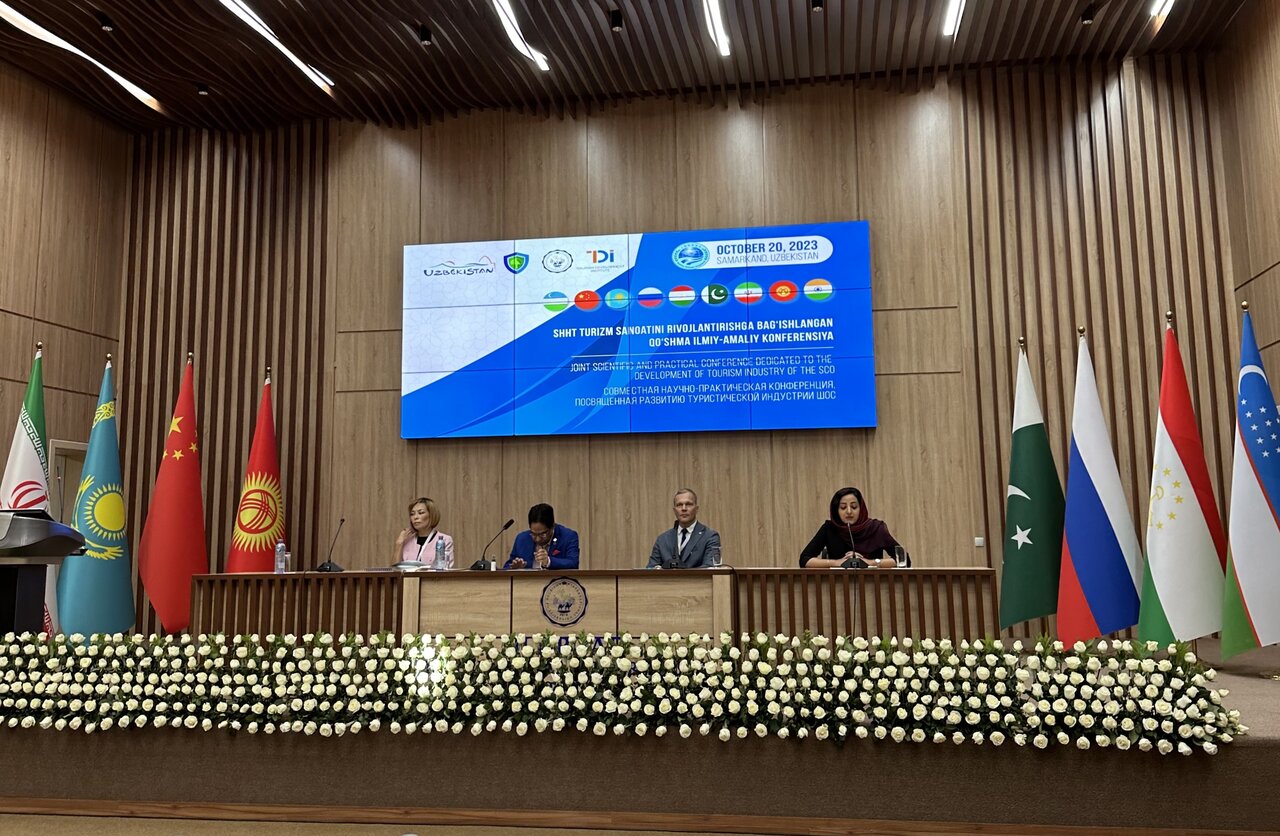Isfahan sustainable tourism projects elaborated at Samarkand conference

TEHRAN – On Sep. 20, a host of cultural heritage and travel researchers from Iran, the UK, Malaysia, China, Pakistan, Uzbekistan, Russia, India, Kazakhstan, Kirgizstan, and Tajikistan addressed a range of issues impacting sustainable tourism and the challenges faced to heritage sites today.
Hosted by the Silk Road International University of Tourism and Cultural Heritage in Samarkand, the conference was initially dedicated to the development of the tourism industry within the Shanghai Cooperation Organization’s member states.
Addressing the conference, Nafise Hajati, an Iranian researcher and journalist, chose to elaborate on some projects currently underway in Isfahan, one of the top travel destinations in the heart of Iran.
She first pointed at a “unique perspective” adopted by Isfahan’s municipal organization, that defines the city as an intertwined amalgam of antiquity and modernity.
“We should recognize [the whole] Isfahan as a historical city. Therefore, every project we undertake should be approached with the understanding that we are planning for and working within a historical city,” Hajati quoted a municipality official as saying.
She said over 40 projects dedicated to the renovation, restoration, and revitalization of historical structures have been carried out in Isfahan since the beginning of the year.
To cite an example, she referred to a giant project, called Baba Qasem, aimed to breathe new life into the city’s Jameh Mosque and its nearby spaces. “Our ambitious project, known as the BABA QASEM project, aims to help revive the oldest part of the city, located near the UNESCO World Heritage site of Isfahan Jameh (Friday) Mosque. This quarter is adorned with numerous historical monuments, some of which are lesser-known nationally registered treasures. Our goal is to breathe new life into these remarkable sites and important quarters.”
She said among the prominent monuments awaiting revival is a mausoleum dating back to the dynasty of Tamerlane, a 700-year-old madrasa, and an ancient tomb, to name a few.
“By restoring and highlighting these hidden gems, we hope to unveil their historical significance and foster a greater appreciation for their cultural heritage.”
To complete the restoration efforts, the BABA QASEM project also involves the addition of various urban facilities. These facilities will enhance the overall livability of the area while accommodating the needs of residents and visitors alike. We aim to create a harmonious blend of heritage and contemporary urban development, Hajati explained.
“With the Isfahan Jameh Mosque serving as a nearby UNESCO World Heritage site, the BABA QASEM project gains even more significance. Visitors will have the unique opportunity to explore both the renowned mosque and the revitalized quarter, immersing themselves in the rich history and cultural diversity of the area.”
The journalist noted the objective of these projects is multifaceted. “We aim to boost tourism in the region, improve living conditions for local residents, and foster the establishment of local handicraft workshops and suitable businesses.”
She added such a scheme would create a more appealing environment for its inhabitants and become more attractive to tourists. “Ultimately, this approach will lead us to achieve sustainable tourism.”
“In this project, we spent six months conducting extensive research, encompassing historical, and social aspects, and more. It was rewarding, however, as we discovered connections between this region and cities such as New York, Khojand, Samarkand, Istanbul, and even Urganj.”
Furthermore, Hajati briefed about the revival of a significant part of Naghse-Jahan Square, which is a UNESCO World Heritage.
“This area, after years of neglect and being closed off to the public, is finally receiving the attention it deserves. [For example], the International Qeysariye Museum, Gallery, & Café was restored and reopened by the private sector managed by Rafiodin Razavi in 2014.”
She said the initiative was aimed at supporting artists and activists in various fields of handicrafts, providing a space for the display and sale of fine contemporary works of art.
“Just three months later, Qeysariye set a record with 625 visitors in a single day, from 9 a.m. to 9 p.m. This means that Qeysariye quickly became a must-visit location in Isfahan. High-ranking guests, ambassadors, ministers, artists, and more consider it a special and VIP part not only in the square but also in the historical city of Isfahan.”
The conference was organized on the sidelines of the 25th session of the World Tourism Organization’s general assembly, which started in Uzbekistan’s Samarkand on October 18.
AFM
Leave a Comment